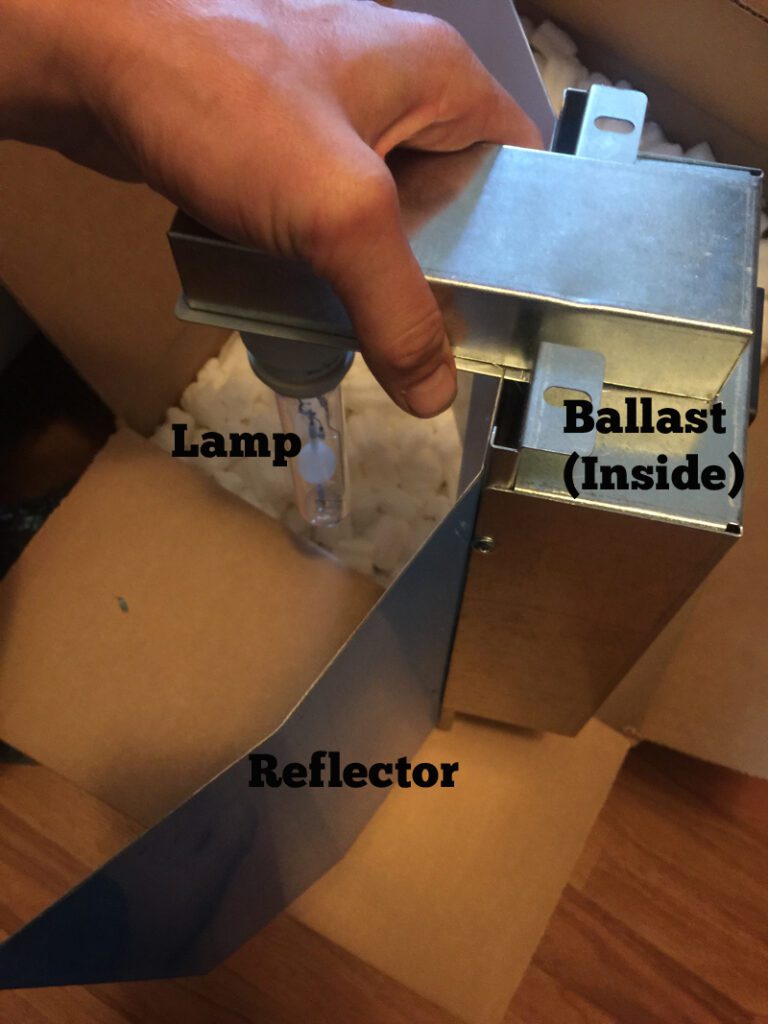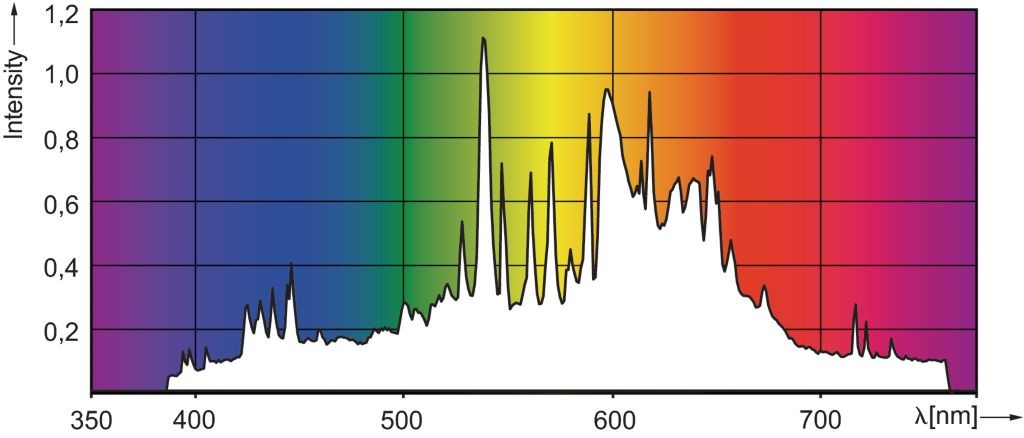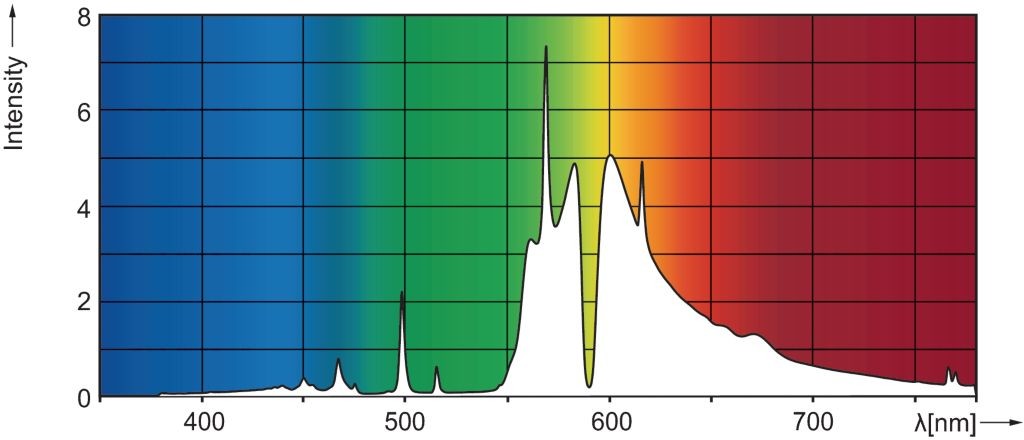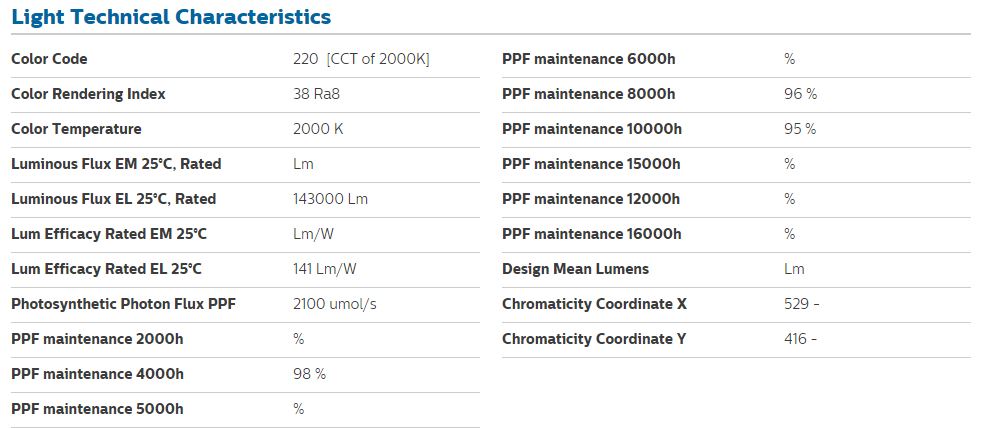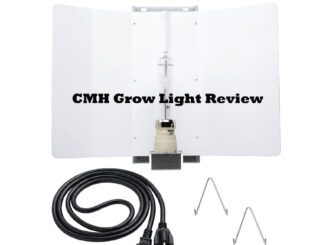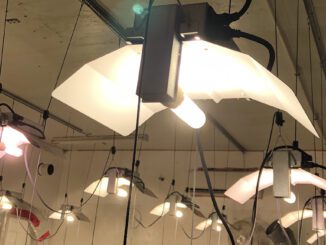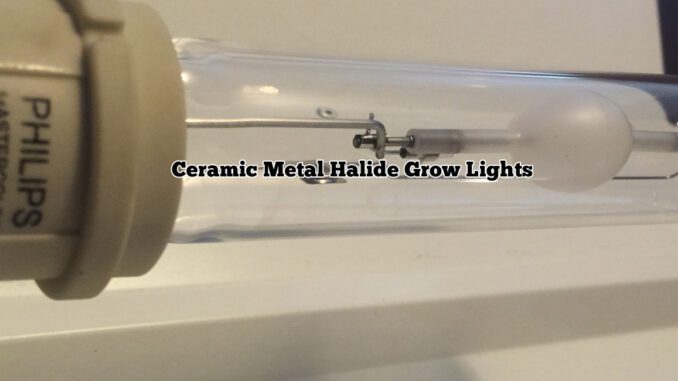
Ceramic Metal Halide Grow Lights
CDM Lighting for Horticulture
Ceramic metal halide grow lights are gaining increasing attention for horticultural applications, especially with indoor growers using artificial lighting such as HPS, MH or LED to grow crops without using sunlight indoors. Urban farming is an important and growing area in the agri-hort sector and efficient crop lighting that allows more harvest for less power is critical. At present time, the wattages of ceramic metal halide grow lights most commonly being used are 315 watt CDM Elite Series by Phillips Lighting, and to a lesser extent the 210 watt version. They are usually sold as a 4000 Kelvin (daylight, more blue) and a 3000 Kelvin (more red, flowering) color renditions. For reference, a common DE 1000 watt HPS lamp is 2000 K (more red ratio in lamp output).
While ceramic metal halide grow lights are not entirely new, the level of of attention they are beginning to receive suggests that growers who like them, tend to like them a lot. One of the main reasons growers hope ceramic metal halide grow lights deliver as hope is the power savings.
More Flower for Less Power?
Presently, some suppliers are suggesting that a 315 watt CDM (ceramic metal halide) lumiere (all in one grow light system) can replace a common 1000 watt HPS lamp and reflector with remote ballast. That’s 315 watts versus 1000 watts. Besides the savings in electricity from the lighting source, this also means much cooler running indoor grow rooms and gardens; the main challenge most indoor growers have is managing heat from lamps. Can this really be possible? Others say it is, and looking around at results in the indoor gardening community it seems plausible. We’ll have more for you on specific yields in times to come as we work with different test growers to access real and practical information and feedback you can use.
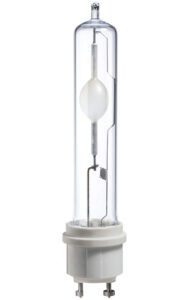
Let’s have a look at the Technology, and compare with DE (double ended) HPS grow lamps, as they are a dominating force for indoor crop lighting at this time.
Overall, ceramic metal halide grow lights produce more blue light, to the human eye it’ a much closer rendering to natural sunlight. Even though the 3000K model has more red in the spectrum, it still appears as white light to humans and animals; although flowering plants appreciate the extra red for more flowers and fruits, usually.
The really BIG difference and possibly an advantage (and maybe why 315 watts can keep up with 1000W HPS) is that the lamps output has some UV (ultra violet) wave lengths. The sun has these for plants, and they love it. Traditional grow lamps like HPS and MH have no significant UV levels, while they can deliver respectable intensities in other lighting wave lengths in the spectrum of light needed for plant growth (photosynthesis).
Shielded VS UnShielded CDM
For single jacketed ceramic grow lamp models installed in unshielded fixtures commonly sold and used, it is not recommended people occupy the area for more than a few minutes at a time while the ceramic metal halide grow lights are operating. If the single outer glass jacket is cracked or ruptured and the lamp remains powered, it can emit short wave radiation in levels that could harm you or animals after a few minutes of direct exposure. Most growers prefer to work on their plants, doing things like pruning, in the dark cycle anyways. A green LED light in the growing area will provide working light for you while not interrupting the plants natural rhythms, as uninterrupted darkness is important to plants in functions like flowering or fruiting in short day plants. Overall, the lamps are very safe and reliable-they have ben engineered to be so. However, to address any concern, shielded lamps or fixtures are available, although there may be some level of loss in effectiveness for plant growth (to be determined)
From Phillips Lighting (http://download.p4c.philips.com/l4bt/3/332474/mastercolor_cdm-t_elite_med_watt_332474_ffs_aen.pdf):
Warnings and Safety
• R “WARNING: These lamps can cause serious skin burn and eye
inflammation from short wave ultraviolet radiation if outer envelope
of the lamp is broken or punctured. Do not use where people will
remain for more than a few minutes unless adequate shielding or
other safety precautions are used. Certain lamps that will
automatically extinguish when the outer envelope is broken or
punctured are commercially available.” This lamp complies with FDA
radiation performance standard 21 CFR subchapter J. (USA:21 CFR
1040.30 Canada: SOR/DORS/80-381)
Operating Ceramic Metal Halide Grow Lamps
Ceramic Metal Halide Grow lamps are usually supplied as a complete fixture, or “lumiere”. This means that they are very quick to install, typically just plug n play after installing the lamp. You may note from the image above that it does not have a “screw in” base, rather a two pin connection. This improved connection actually helps improve the lamp performance and reliability. Ceramic metal halide grow light fixtures tend to run very cool, and can be used in grow tents, smaller spaces, etc while naturally they are great for larger installations where multiple lights are required. Most manufactueres suggest you can replace a common 1000W HPS lamp in a 1:1 ratio with 315 watt CDM ceramic metal halide grow lights. Others suggest using them in a 2:1 ratio with DE HPS, so for every two 1kw DE HPS, install one 315 watt CDM fixture to add more blue and UV wavelengths.
Basic Ceramic Metal Halide Recommendations:
Hang lumiere three feet above crop height, for coverage in four feet by four feet. Does best with plants that finish at shorter heights, while side lighting can be applied for taller crops to maintain uniformity. BONUS: Ceramic Metal Halide lamps are often rate for Universal positioning, ie does not have to be horizontal only.
Does it Require a Special Ballast?
Yes, although it’s usually supplied pre-wired and ready to plug in. GOOD NEWS: they are intended to run at Low Frequencies (Hz) so EMI issues are not likely to be a problem. The ballast runs relatively cool, and weighs in at around 2 kilos making lumieres reasonably light and easy to mount or adjust.
Comparison: 315 watt Ceramic Metal Halide VERSUS 1000W DE HPS
Above: 315 watt Ceramic Metal Halide Spectrum
Above: 315 watt Ceramic Metal Halide Lighting Characteristics
Above: 1000 watt Double Ended HPS Spectrum
Above: 1000 watt Double Ended HPS Lighting Characteristics. NOTE, No UV Characteristics listed

